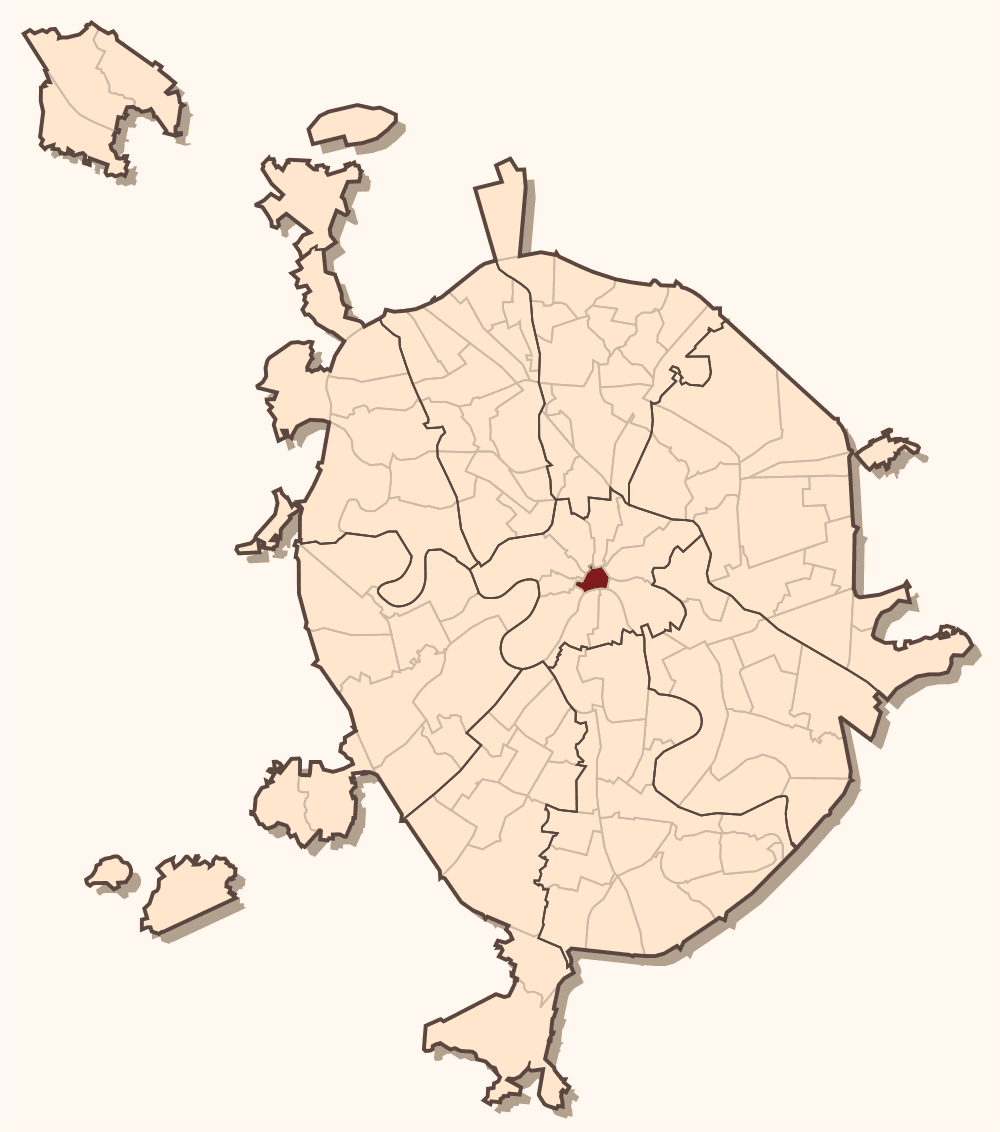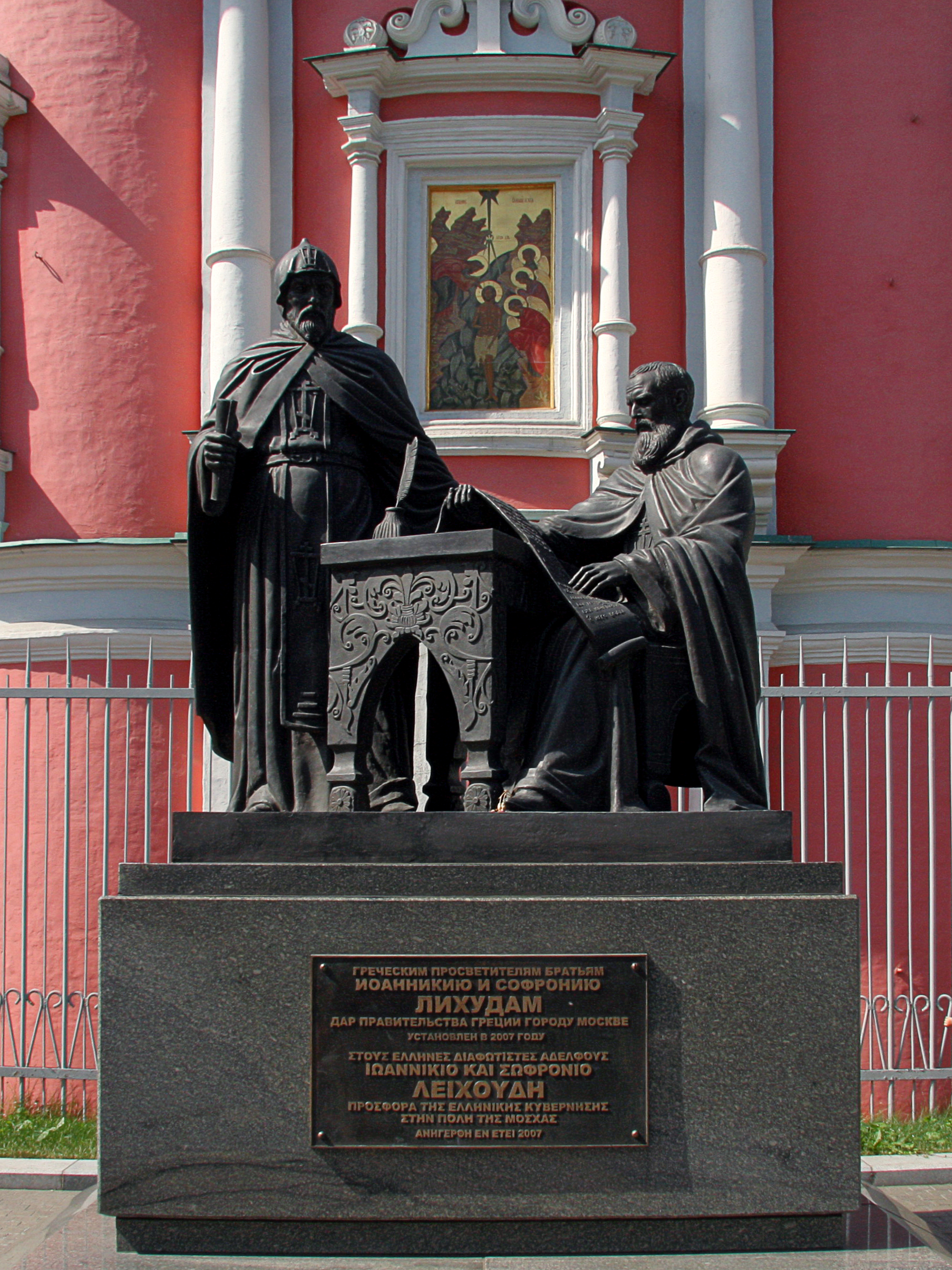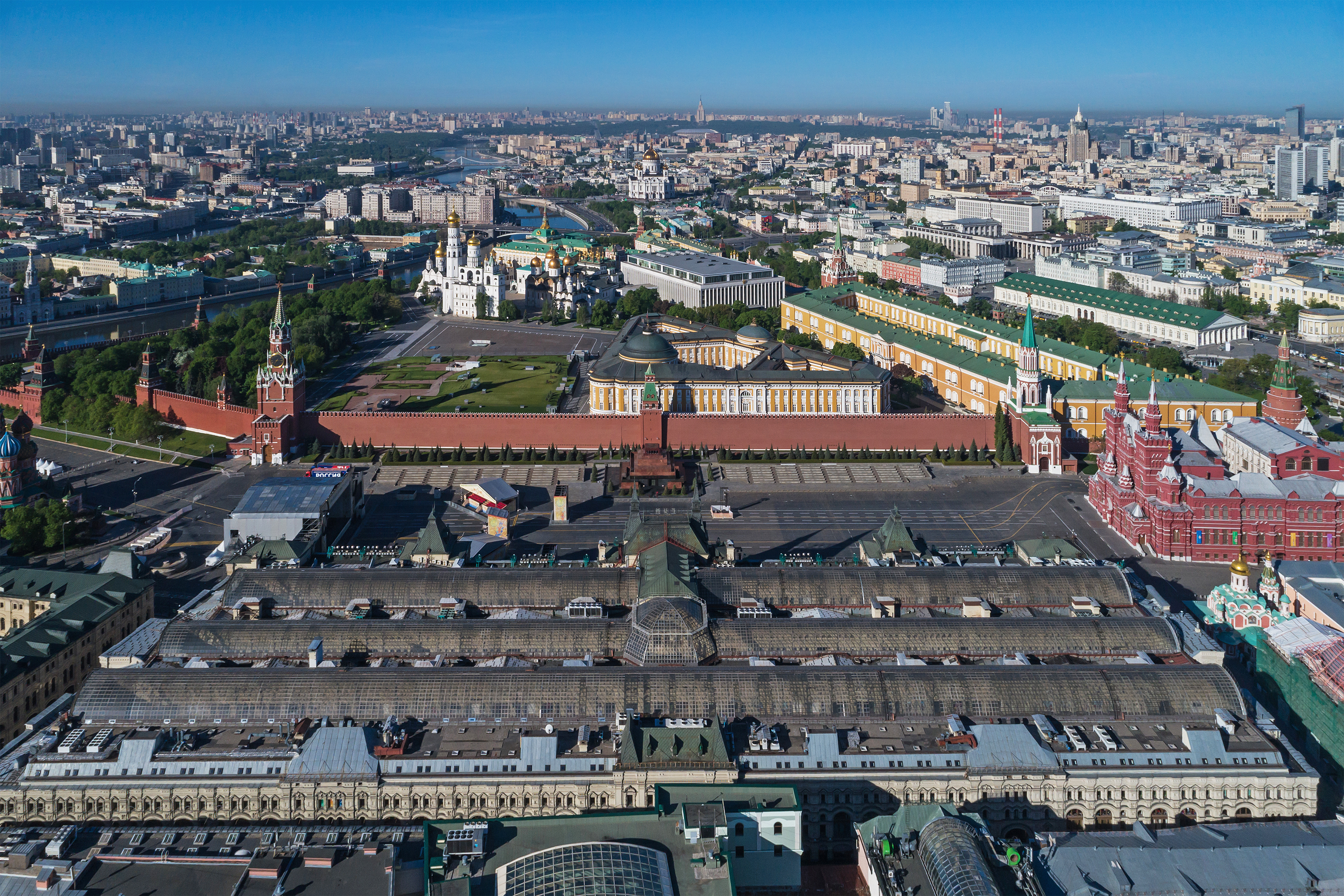|
Kitai-gorod
Kitay-gorod (, ), also referred to as the Great Possad () in the 16th and 17th centuries, is a cultural and historical area within the central part of Moscow in Russia, defined by the remnants of now almost entirely razed fortifications, narrow streets and very densely built cityscape. It is separated from the Kremlin by the Red Square. Kitay-gorod does not constitute a district (''raion''), as there are no resident voters, thus, municipal elections are not possible. Rather, the territory has been part of Tverskoy District, and the Central Administrative Okrug authorities have managed the area directly since 2003. Destruction during the Soviet era All 10 chapels, 7 out of 18 parish churches, the Cathedral of the Nikolo-Greek Monastery, and two monastery bell towers were demolished in Kitay-gorod in the 1920s and 1930s by the Soviet government. After the destruction of the ancient wall with fortress towers, Kitay-gorod lost its borders and outlines. And in the mid-30s, with the ... [...More Info...] [...Related Items...] OR: [Wikipedia] [Google] [Baidu] |
Slavyanskaya Square
Slavyanskaya Square () is a square in central Moscow, renamed in 1924–1990 as northern side of Nogina Square (Площадь Ногина); the southern side of Soviet-era Nogina Square reverted to its old name Varvarka Gates Square (Площадь Варварских Ворот). These two square separates central Kitai-gorod from eastward Tagansky District. They connect to Varvarka Street (west), Solyanka Street (east), Kitaigorodsky Lane (south), Staraya Square and Lubyansky Lane (north), completing the half-circle of Central Squares of Moscow around Moscow Kremlin and Kitai-gorod. Disambiguation Slavyanskaya Square and southbound Varvarka Gates Square form a contiguous city square, but are officially different locations, a fact that may confuse even Muscovites. To add to this confusion, Staraya Square is not a square per se but a city street (closed to regular traffic) that discharges into Varvarka Gates Square. In the past, Staraya (Old) and Novaya (New) Squares ... [...More Info...] [...Related Items...] OR: [Wikipedia] [Google] [Baidu] |
Tverskoy District
Tverskoy District ( rus, Тверской район, p=tvʲɪrˈskoj, a=Ru-Тверской.ogg) is a administrative divisions of Moscow, district of Central Administrative Okrug of the federal cities of Russia, federal city of Moscow, Russia. Population: The district extends from Kitai-gorod northwest to Belorussky Rail Terminal, Belorussky and Savyolovsky Rail Terminals. Its southern boundary runs one or two city blocks south from Tverskaya Street; eastern boundary follows the track of the Neglinnaya River now flowing in a tunnel under Samotechnaya Street, Tsvetnoy Boulevard, and Neglinnaya Street. Tverskoy District houses State Duma, Federation Council of Russia, Federation Council, the Mayor of Moscow, Moscow City Council, and Moscow Police Headquarters. It contains Theatre Square (Moscow), Theatre Square, the business district of Tverskaya Street with Pushkin Square, Petrovka Street, Dmitrovka Street, and the western part of Kuznetsky Most. It has the highest concentration ... [...More Info...] [...Related Items...] OR: [Wikipedia] [Google] [Baidu] |
Petrok Maly
Petrok Maly, also known as Petrok Maly Fryazin (, lit. Peter Junior) (? - ), was an Italian architect, who arrived in Moscow together with the envoys of Pope Clement VII in 1528. He was likely born Pietro Annibale in Italy, and worked as an architect by the Vatican. He would have lost his secure employment with the Sack of Rome in 1527. There was a demand for builders in Muscovy, and he traveled there with the Pope's support. His work in Russia includes the 1532 construction of the Ascension Church in Kolomenskoye (the true architect's identity is still contested), one of the earliest Russian churches showing tented roof design. In 1533, Petrok Maly was commissioned to build the so-called Kitai-gorod wall, the construction of which would be finished in 1538. The 2.6-km wall originally featured 12 towers and four gates. In 1539 turmoil at the royal court after the death of Elena Glinskaya led Maly to flee to Livonia, where he told his story to the Bishop of Dorpat (Tartu ... [...More Info...] [...Related Items...] OR: [Wikipedia] [Google] [Baidu] |
Kitai-gorod Wall
Kitay-gorod (, ), also referred to as the Great Possad () in the 16th and 17th centuries, is a cultural and historical area within the central part of Moscow in Russia, defined by the remnants of now almost entirely razed fortifications, narrow streets and very densely built cityscape. It is separated from the Kremlin by the Red Square. Kitay-gorod does not constitute a district (''raion''), as there are no resident voters, thus, municipal elections are not possible. Rather, the territory has been part of Tverskoy District, and the Central Administrative Okrug authorities have managed the area directly since 2003. Destruction during the Soviet era All 10 chapels, 7 out of 18 parish churches, the Cathedral of the Nikolo-Greek Monastery, and two monastery bell towers were demolished in Kitay-gorod in the 1920s and 1930s by the Soviet government. After the destruction of the ancient wall with fortress towers, Kitay-gorod lost its borders and outlines. And in the mid-30s, with the ... [...More Info...] [...Related Items...] OR: [Wikipedia] [Google] [Baidu] |
Central Squares Of Moscow
The Central Squares of Moscow consists of a chain of squares around the historical Moscow Kremlin and Kitai-gorod areas of central Moscow, Russia, following the historical and now mostly razed Kitai-gorod wall. These squares and avenues connecting them form the innermost ring road in Moscow open to regular traffic. The names of central squares changed frequently for political reasons and as a result of urban redevelopment; some of these squares are actually city streets ( Staraya Square, Novaya Square); other locations are shaped like squares, but have no names of their own. List This is a list of the Central Squares and their connecting avenues, clockwise from Bolshoy Kamenny Bridge: * Borovitskaya Square ** Manege Street (inner ring, closed to traffic) and Mokhovaya Street (outer ring) * Manezhnaya Square, Moscow ** Okhotny Ryad Street * Revolution Square, Moscow (inner ring) and Theatre Square (outer ring) ** Teatralny Lane * Lubyanka Square ** Novaya Square (inner rin ... [...More Info...] [...Related Items...] OR: [Wikipedia] [Google] [Baidu] |
Central Administrative Okrug
Central Administrative Okrug, or Tsentralny Administrativny Okrug (, ''Tsentralny administrativny okrug''), is one of the administrative divisions of Moscow, twelve administrative okrugs of Moscow, Russia. Population: . It is the core of the city that includes its oldest, historical parts: Kremlin and the former Bely Gorod and Zemlyanoy Gorod; with certain churches and fortifications as old as from the 14th to 15th century. It is also the site of Russia's highest government institutions, such as the Government house, the State Duma, the Federation Council, and most ministries. A large part of the territory is occupied by office buildings, especially in the Moscow International Business Center, "Moscow-City" business district on the west side of the Okrug. Territorial organisation The okrug, governed by the prefecture, encompasses ten districts. The territory of Kitai-gorod is not a part of any district and is governed by the administrative okrug directly. As other okrugs, it was ... [...More Info...] [...Related Items...] OR: [Wikipedia] [Google] [Baidu] |
Slavic Greek Latin Academy
The Slavic Greek Latin Academy () was the first higher education establishment in Moscow. History Beginning The academy's establishment may be viewed as a result of the incorporation of the Left-Bank Ukraine into Muscovy after the Treaty of Pereyaslav. Under Fyodor Rtishchev's auspices, Epiphanius Slavinetsky and other learned monks moved from Kiev to Moscow and brought a taste for learning there. The Ukrainian and Polish influence was paramount at the court of Tsar Feodor III. In 1682, he signed the academy's charter ('), which had been elaborated by Sylvester Medvedev. The academy was organized in 1685-1687 under the guidance of two Greek brothers Joannicus and Sophronius Likhud on the premises of the Zaikonospassky Monastery with over 70 students. The academy was placed under the care of the Patriarch Prikaz. The curriculum was divided into levels ("schools"), including Slavonic and Greek writing, seven liberal arts (septem artes liberales), and theology. The academy itse ... [...More Info...] [...Related Items...] OR: [Wikipedia] [Google] [Baidu] |
GUM (department Store)
GUM () is a shopping center in Moscow, Russia. It was also the main department store in many cities of the former Soviet Union; similarly named stores operated in some Soviet republics and in post-Soviet states. The most famous GUM is the large store facing Red Square in the Kitai-gorod area – itself traditionally a mall of Moscow. Originally, and today again, the building functions as a shopping mall. During most of the Soviet period it was essentially a department store as there was one vendor: the Soviet State. Before the 1920s the location was known as the Upper Trading Rows (). As of 2021, GUM carries over 100 different brands, and has cafes and restaurants inside the mall. Moscow GUM Design and structure With the façade extending for along the eastern side of Red Square, the Upper Trading Rows were built between 1890 and 1893 by Alexander Pomerantsev (responsible for architecture) and Vladimir Shukhov (responsible for engineering). The trapezoidal building features ... [...More Info...] [...Related Items...] OR: [Wikipedia] [Google] [Baidu] |
Theatre Square (Moscow)
Theatre Square or Teatralnaya Square (, ''Teatralnaya ploshchad''), known as Sverdlov Square between 1919 and 1991, is a city square in the Tverskoy District of central Moscow, Russia. It is at the junction of Kuznetsky Bridge Street, Petrovka Street, and Theatre Drive (north-west of the latter; the square south-east of Theatre Drive is the separate Revolution Square). The square is named after the three theatres located on it: the Bolshoi Theatre, Maly Theatre, and Russian Academic Youth Theatre. The square is served by the Moscow metro at the Teatralnaya station on the Zamoskvoretskaya Line; Okhotny Ryad station on the Sokolnicheskaya Line; and Ploshchad Revolyutsii station on the Arbatsko-Pokrovskaya Line. History The square emerged after the 1812 Fire of Moscow and conversion of the Neglinnaya River into an underground channel. The river still flows diagonally under the square's park. It was designed in a symmetrical Neoclassical style by Joseph Bove in the 1820s, ... [...More Info...] [...Related Items...] OR: [Wikipedia] [Google] [Baidu] |
Zaikonospassky Monastery
The Monastery of the Holy Mandylion or Zaikonospassky Monastery () is an Russian Orthodox Church, Orthodox monastery on the Nikolskaya Street in Kitai-gorod, Moscow, just one block away from the Moscow Kremlin, Kremlin. It was founded in 1600 by Boris Godunov.''Заиконоспасский монастырь, Спас на "Священной улице", Orthodox site "Pravoslavie", August 2008, in Russian.'' At first called "Saviour the Old", the monastery gradually acquired its present quaint name which alludes to its location and means "the Saviour behind the icon shops". In the late 17th century, the monastery's learned administrators such as Symeon of Polotsk and Sylvester Medvedev had it transformed into a hotbed of Age of Enlightenment, enlightenment. Between 1687 and 1814, it was home to the Slavic Greek Latin Academy, Russia's first high school, secondary education establishment. There is a memorial Commemorative plaque, plaque in honor of its most famous student, Mik ... [...More Info...] [...Related Items...] OR: [Wikipedia] [Google] [Baidu] |
Red Square
Red Square ( rus, Красная площадь, Krasnaya ploshchad', p=ˈkrasnəjə ˈploɕːɪtʲ) is one of the oldest and largest town square, squares in Moscow, Russia. It is located in Moscow's historic centre, along the eastern walls of the Moscow Kremlin, Kremlin. It is the city's most prominent landmark, with famous buildings such as Saint Basil's Cathedral, Lenin's Mausoleum and the GUM (department store), GUM department store. It has been a UNESCO World Heritage Site since 1990. Red Square has been the scene of executions, demonstrations, riots, parades, and speeches. Almost 73,000 square metres (800,000 square feet), it lies directly east of the Kremlin and north of the Moskva River. A moat that separated the square from the Kremlin was paved over in 1812. Location Red Square has an almost rectangular shape and is 70 meters wide and 330 meters long. It extends lengthways from northwest to southeast along part of the wall of the Kremlin that forms its boundary on ... [...More Info...] [...Related Items...] OR: [Wikipedia] [Google] [Baidu] |
Bastion
A bastion is a structure projecting outward from the curtain wall of a fortification, most commonly angular in shape and positioned at the corners of the fort. The fully developed bastion consists of two faces and two flanks, with fire from the flanks being able to protect the curtain wall and the adjacent bastions. Compared with the medieval fortified towers they replaced, bastion fortifications offered a greater degree of passive resistance and more scope for ranged defence in the age of gunpowder artillery. As military architecture, the bastion is one element in the style of fortification dominant from the mid 16th to mid 19th centuries. Evolution By the middle of the 15th century, artillery pieces had become powerful enough to make the traditional medieval round tower and curtain wall obsolete. This was exemplified by the campaigns of Charles VII of France who reduced the towns and castles held by the English during the latter stages of the Hundred Years War, and by th ... [...More Info...] [...Related Items...] OR: [Wikipedia] [Google] [Baidu] |






